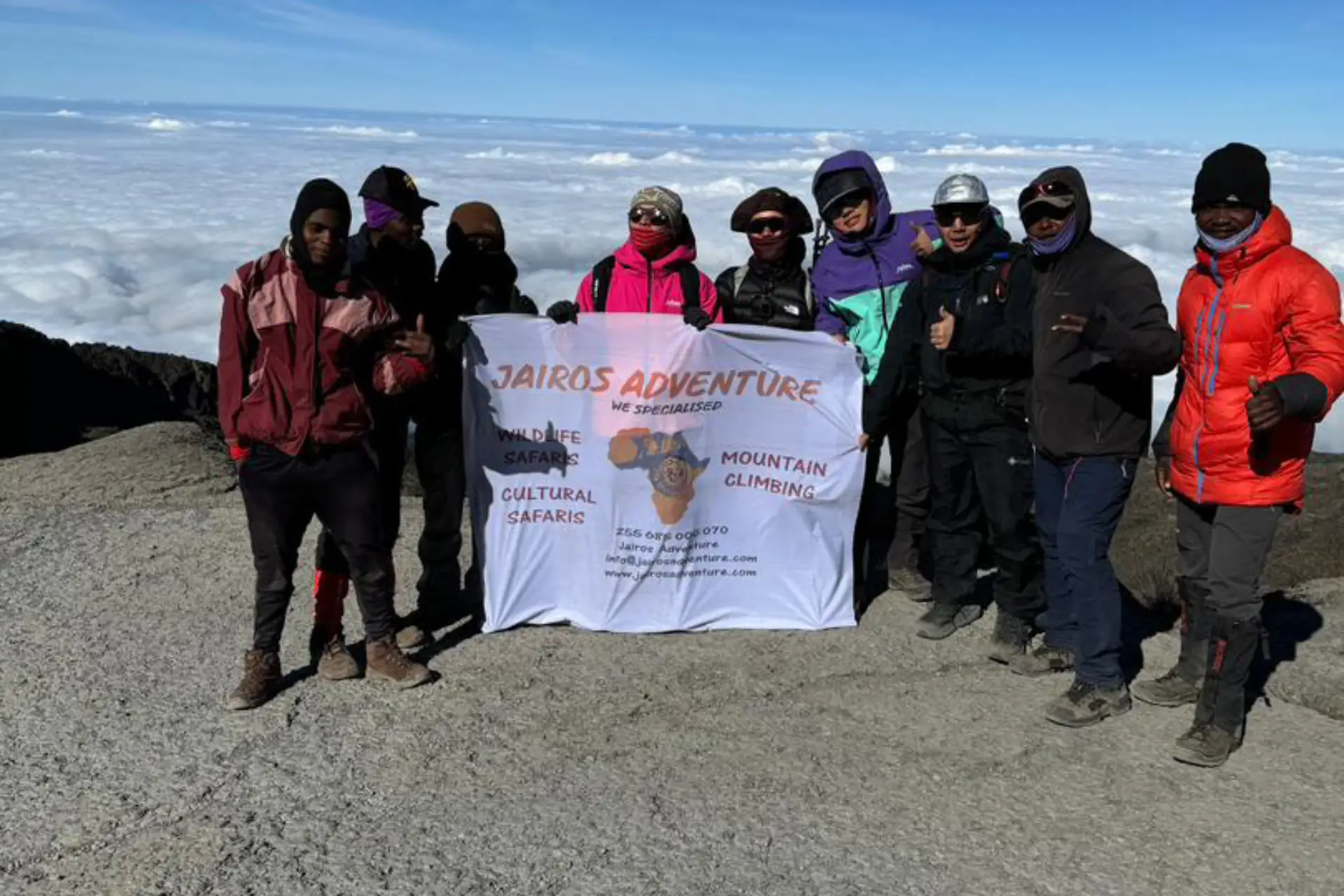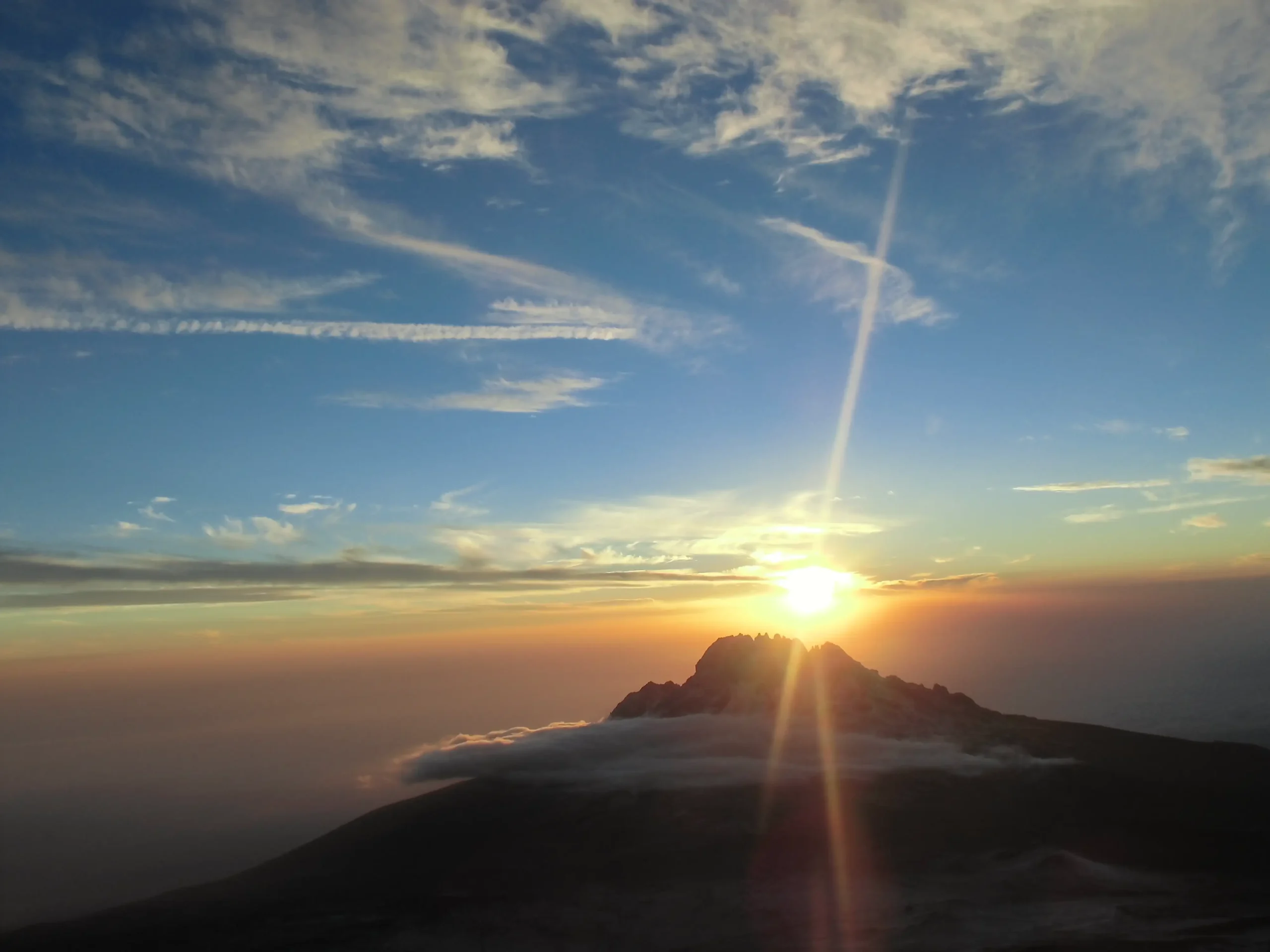Training to Climb Kilimanjaro
Train with courage. Climb with Jairos Adventure.
Training to Climb Kilimanjaro
The Mountain That Changes Everything
Standing before Mount Kilimanjaro is a feeling like no other — the world’s tallest free-standing mountain rising through the clouds of northern Tanzania.
It calls to dreamers, explorers, and everyday heroes who dare to believe they can reach the top of Africa.
At Jairos Adventure, we’ve guided countless climbers to Uhuru Peak. Some were athletes. Others were people who had never hiked a mountain before.
What united them wasn’t strength — it was heart.
Training for Kilimanjaro isn’t about being perfect. It’s about preparing your body and soul for something unforgettable.
Step-by-Step: How to Train for Kilimanjaro
- Start Walking — Every Step Counts
Begin 2–3 months before your climb. Walk long distances several times a week, adding hills and a light backpack.
Your goal isn’t speed — it’s stamina. The slow, steady pace you practice now will be your secret weapon on the mountain.
- Build Strength and Balance
Strong legs and core muscles help you stay stable on rocky trails.
Do squats, lunges, and step-ups 3–4 times a week.
Add yoga or stretching to improve flexibility — it’s as important as strength when trekking for hours each day.
- Train Your Heart
Your heart is your engine.
Do cardio — cycling, running, or swimming — to build endurance.
Try interval workouts: short bursts of effort followed by rest.
Remember, altitude challenges your lungs — this training prepares them to keep going.
- Simulate the Climb
Hike on weekends, use stairs or steep trails, and carry a backpack similar to what you’ll use on Kilimanjaro.
If possible, train on uneven terrain or small mountains. Your body learns balance and endurance.
- Mental Strength Is Everything
There will be moments on Kilimanjaro when you’re tired, cold, or doubting yourself.
That’s where your why matters.
Train your mind to stay positive. Listen to your breath, feel your heartbeat, and trust that every step takes you closer to your dream.
Eat, Rest, and Recover Like a Climber
Fuel your body with energy-rich foods — fruits, vegetables, grains, and protein.
Drink plenty of water and rest well between training days.
During the climb, hydration and slow pacing are your best friends.
Our guides at Jairos Adventure remind every climber: Pole pole — slowly, slowly — that’s how you conquer Kilimanjaro.
The Power of Preparation
Training isn’t just about the body — it’s about awakening your spirit.
Every walk, every early morning jog, every drop of sweat builds your courage.
And when you finally reach Uhuru Peak, standing above the clouds as the sun rises, you’ll know — every moment of preparation was worth it.
At Jairos Adventure, we walk beside you through every step — from your first day of training to your first breath at the summit.
Our expert guides, mountain chefs, and support crew make sure your climb is safe, personalized, and unforgettable.
You’re Kilimanjaro Journey Starts Today
Mount Kilimanjaro isn’t just a mountain — it’s a life-changing journey.
So start now. Lace up your boots. Take that first step.
Because the summit doesn’t begin at 5,895 meters — it begins today.
👉 Start Your Kilimanjaro Training Plan with Jairos Adventure
👉 Explore Kilimanjaro Routes and Climbing Packages
Pro Tip
Every climber who reaches the top of Kilimanjaro carries more than memories — they carry pride, peace, and the feeling that nothing is impossible.
Your training is more than preparation — it’s the first chapter of your success story.
And when you stand above the clouds, you’ll whisper to yourself…
“I did it.”


